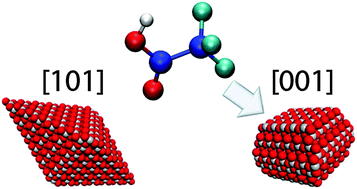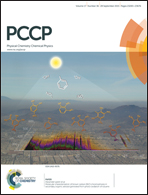Adsorption properties of trifluoroacetic acid on anatase (101) and (001) surfaces: a density functional theory study
Abstract
The interaction of trifluoroacetic acid with anatase TiO2(101) and TiO2(001) surfaces has been studied by means of periodic density functional theory based calculations. On the former, the interaction is weak with the adsorbed molecules in a configuration almost indistinguishable from the gas phase structure. On the latter, the interaction is very strong; the molecule adsorbs as trifluoroacetate and releases a proton that binds an oxygen surface atom with a significant distortion of the substrate. The difference in adsorption the mode and strength can be understood from the different structural features of both surfaces and provides arguments to the role of trifluoroacetic as a morphological control agent in the solvothermal synthesis of TiO2 nanoparticles with predominant (001) facets. This, in turn, has a very significant impact on industrial production strategies of value-added TiO2 for photocatalytic applications. Analysis of calculated core level binding energies for F(1s) confirms the experimental assignment to F at the surface as F− at Ti surface sites and to F in –CF3 groups of the adsorbed molecule.


 Please wait while we load your content...
Please wait while we load your content...